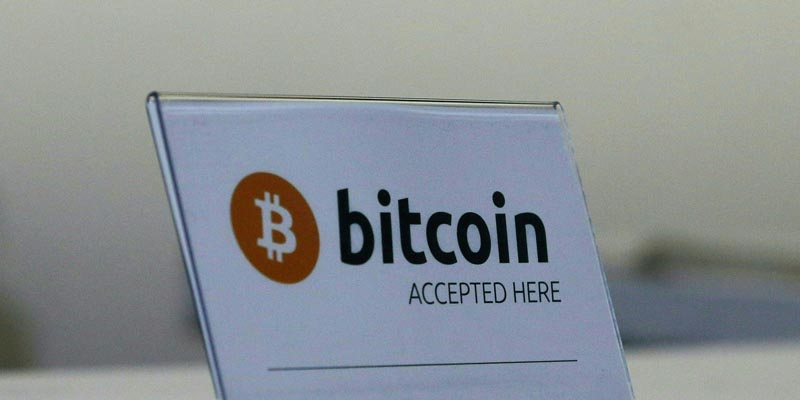- India
- Feb 15
Why cryptocurrencies should be banned? RBI deputy governor explains
Making a strong case for banning cryptocurrencies, Reserve Bank deputy governor T. Rabi Sankar said they are even worse than Ponzi schemes and threaten the financial sovereignty of a country.
While delivering a keynote address at the Indian Banks Association 17th Annual Banking Technology Conference and Awards, Sankar explained that the crypto-technology is underpinned by a philosophy to evade government controls and they have been specifically developed to bypass the regulated financial system.
The key points highlighted by the deputy governor:
The basics on cryptocurrency and Bitcoin
Cryptocurrencies and other crypto products (like non-fungible tokens or NFTs) are being hailed as the innovations that would usher in decentralised finance (DeFi), which are blockchain applications geared to disrupt the traditional financial system.
The class of crypto products are fundamentally designed to bypass the established financial system, and on a larger scale government itself. Some refer to it as ‘freedom’ money. For all the hype about a revolutionary innovation, cryptocurrencies themselves do not appear to be designed to meet any need in the finance space that is currently not being met or to meet existing needs more efficiently. The innovation, if at all, is of distributed ledger, which, contrary to the claims of proponents, can flourish even if cryptocurrencies themselves are banned across the world.
Satoshi Nakamoto, a fictional person or persons or corporate or any other entity, was behind the creation of Bitcoin. It is based on blockchain technology. On a blockchain, when a transaction occurs, it is broadcast to all computers on the network. A set of new transactions, called a block, are authenticated by an agreed consensus mechanism, and then the validated transaction block is added to the previous chain of blocks. Every block is linked to the previous block, making double spending difficult because it would involve changing every subsequent block.
Bitcoin was followed by many others, like ether, cardano, dogecoin, tether, stellar, etc. Collectively they are called cryptocurrencies. The prefix ‘crypto-‘ refers to the fact that cryptography is used to generate or authenticate transactions.
The defining characteristics of cryptocurrencies are:
i) That cryptocurrencies are decentralised systems where transactions are authenticated by participants themselves by consensus. They are designed to bypass the financial system and all its controls. They cannot be traced or confiscated or frozen by governments.
ii) They are anonymous – transactions are verified, but not the purposes or counterparties of transactions.
iii) They are borderless – that is, they work over the internet without any physical existence.
While Bitcoin started in 2008, until 5 years ago, total market capitalisation of all cryptocurrencies was only $20 billion (February 2017). This went up to $289 billion in February 2020 and thereafter exploded to reach a peak of $2.9 trillion in November 2021. Currently (February 9, 2022) it stands at $1.98 trillion. Bitcoin accounts for 42 per cent of this market capitalisation.
Why cryptocurrency is not a currency?
Firstly, currency always has an issuer, usually a trusted entity like the sovereign. Even when gold is used as a currency, the gold coins had to be issued by a sovereign entity.
Secondly, historically, a currency has always been either a commodity with intrinsic value or a debt instrument. Cryptocurrencies do not conform to this understanding of a currency as they do not have an issuer, they are not an instrument of debt, or commodities nor do they have any intrinsic value.
Currency needs trust, not everything that can be trusted is a currency. So even if technology (as in a blockchain) provides the trust for cryptocurrencies, they can at best perform the role of a currency within the private and closed environment of that cryptocurrency. They do not, and should not, automatically become a currency for the larger society.
There is an effort to treat cryptocurrencies as a commodity. But commodities are tangible and have utility. Cryptocurrencies have neither.
Cryptocurrencies are very much like a speculative or gambling contract working like a Ponzi scheme.
The volatility of many cryptocurrencies precludes them as an efficient medium of exchange. Besides, a priori there is no ground to believe that people place the same trust in them as they do in legal tender currencies. While there is anecdotal evidence of businesses using Bitcoin, there really is no reliable data available. By all indications their use as a currency appears to be negligible.
What are the risks posed to society or the economy?
The fundamental risks of cryptocurrencies are two. They are intended to be private currencies and they are structured to evade government control with respect to financial integrity standards such as Know Your Customer (KYC), Anti-Money Laundering and Countering Financing of Terrorism (AML/CFT), etc.
Historically, private currencies have resulted in instability and therefore have evolved into fiat currencies over centuries. Every private currency will eventually replace the Rupee to some extent. Consequently, the role of the Rupee as a currency will be undermined. With one or more private currencies being allowed, there would be parallel currency system in the country.
Thus, increased acceptance of cryptocurrencies would result in effective ‘Dollarization’ of our economy. Dollarization is the partial or full replacement of a country’s domestic currency with a foreign currency,
Dollarization, it is well understood, would undermine the ability of authorities to control money supply or interest rates, as monetary policy would not have any impact on the non-Rupee currencies or payment instruments.
When that happens, India loses not just its currency, a defining feature of its sovereignty, but its policy control of the economy. With loss of traction for monetary policy, the ability to control inflation would be materially weakened.
If private currencies are permitted, the banking system’s ability to mobilise deposits in Rupees, and consequently, the ability to create credit, would diminish. Credit creation in convertible currencies would be impervious to monetary policy. In the extreme case where a major part of deposits and credit shift to cryptocurrencies, the result would be a weakened, even crumbling, banking system, impairing financial stability.
There are already indications that private cross-border flows are taking place in cryptocurrencies. If this trend is legitimised, a part of the flows related to trade payments, personal remittances or cross border investments would be made in these cryptocurrencies. As they are non-reserve currencies, this could have adverse implications for India’s foreign exchange reserves, which lend stability to the external sector.
Also, such cryptocurrency payments can take place outside the ambit of capital account regulations. This would adversely affect the integrity of the capital account regime, as policy control on capital flows would be eroded. The consequence of this on foreign exchange reserve accretion and exchange rate management raises serious macroeconomic stability issues.
The fact that they are anonymous, decentralised systems that operate purely virtually makes cryptocurrencies particularly attractive to illegal/illegitimate transactions which have been largely filtered out of the formal financial system.
Should cryptocurrencies be permitted and regulated in India?
Various arguments have been extended to permit cryptocurrencies and subject them to close regulations.
Some of these arguments are:
i) Blockchain or Distributed Ledger Technology (DLT) is a promising technology where Indians might have a global edge. Banning cryptocurrencies would affect the absorption of DLT technology in India.
Counter-argument: Creating native cryptocurrencies is just one way of implementing a blockchain. It can be viewed as just one use case of the blockchain technology. There are many other uses of blockchain technology or more generally, Distributed Ledger Technology, that do not involve creation of a virtual currency. Thus, claims that cryptocurrencies must be permitted for blockchain technology to thrive are not sustainable.
ii) Most major countries are not banning cryptocurrencies, but are considering some kind of regulation.
Counter-argument: While replicating the practices followed in advanced economies (AEs) is often an acceptable route to reforms, as far as cryptocurrencies are concerned, it has to be noted that India is not similarly placed as AEs. We should particularly be alert to the possibility that these private currencies can be used for global strategic control. If, for example, some private currency substantially replaces the rupee, the corporate which manages that cryptocurrency (or the country which has control of that corporate) can practically control India’s economic policy. AEs have more mature markets which can withstand the potential disruption from cryptocurrencies. They are, therefore, in a better position to wait and watch. AEs have quicker legal systems and hence concerns of misuse of cryptos can be addressed through the legal systems.
iii) Many Indians have already invested in cryptocurrencies and banning it may lead to wealth loss for them.
Counter-argument: There are three reasons such arguments do not appear justified. One, banning in India does not mean investors would lose money, because they can be provided with a reasonable exit.
Two, persons who have invested in these instruments are fully aware of the risks involved. The Reserve Bank has been warning investors of the risks for nearly a decade.
Three, there is no data to justify how many investors have invested in these instruments and what is the amount of investment. Data informally gathered in November 2021 seems to indicate that crypto investments by Indians is nowhere near to being significant. Wealth loss, if at all it is a possibility, is likely to affect only a small fraction of these investors.
iv) Banning in any case is unlikely to be effective because by its very nature cryptocurrencies can be acquired and traded in an anonymous manner.
Counter-argument: That cryptocurrencies should not be banned, because a ban is unlikely to be effective is a superficial argument. One might as well argue that drug trafficking is a rampant phenomenon despite a ban, and therefore drug trafficking should be legalised and regulated. If cryptocurrencies are banned, the vast majority of investors who are law abiding would desist from investing. Those few elements who would continue to invest will essentially be carrying out an illegal activity. Such exceptions should reinforce the need for a ban, rather than invalidate it.
Cryptocurrencies are not currencies, or financial assets or real assets or even digital assets. Therefore, it cannot be regulated by any financial sector regulator. It is not possible to regulate something that one cannot define.
All these factors lead to the conclusion that banning cryptocurrency is perhaps the most advisable choice open to India.
Click here for the full speech.
Manorama Yearbook app is now available on Google Play Store and iOS App Store






